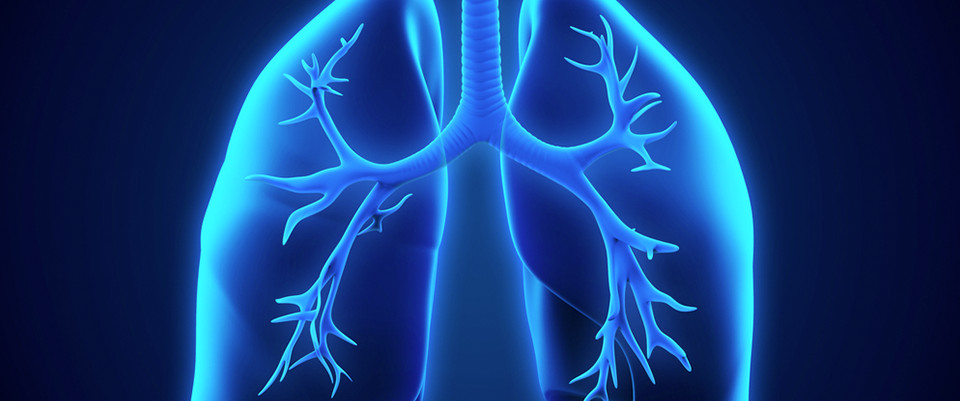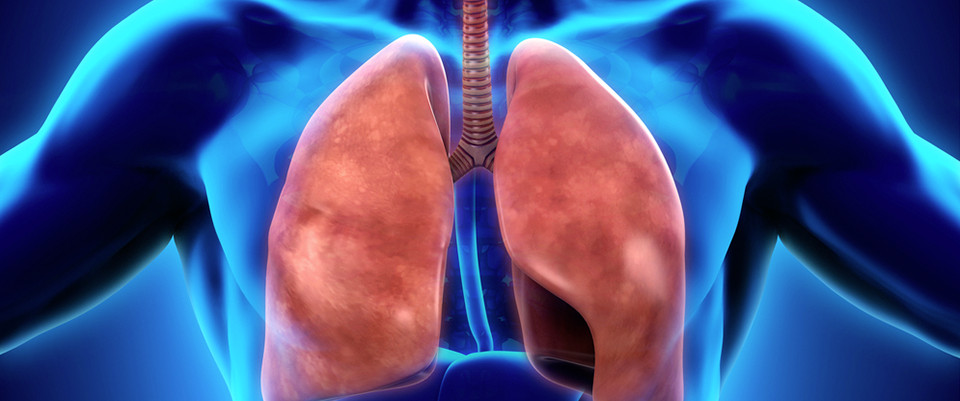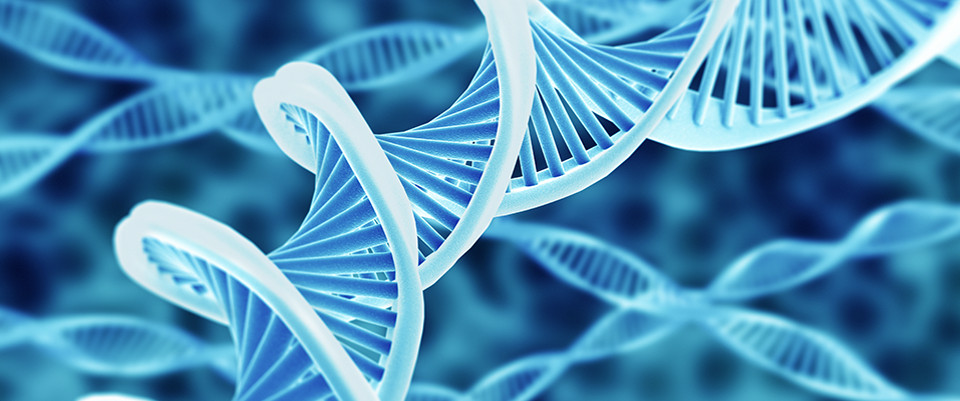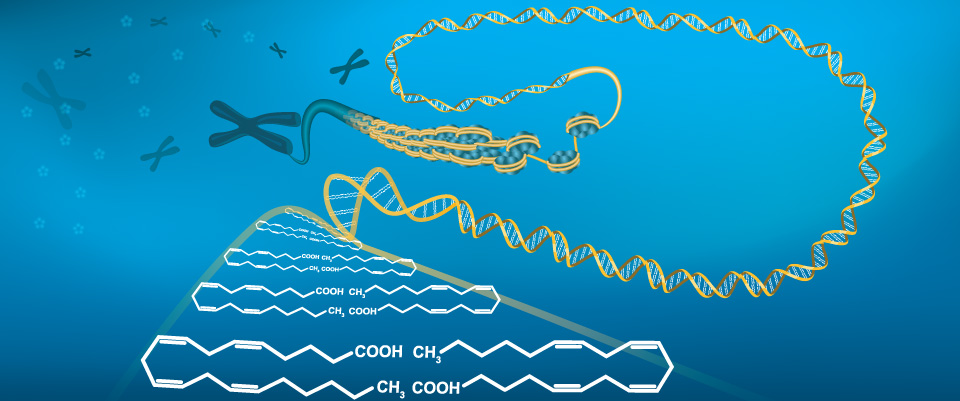PubMed
The importance of mass spectrometric dereplication in fungal secondary metabolite analysis.
Related Articles
The importance of mass spectrometric dereplication in fungal secondary metabolite analysis.
Front Microbiol. 2015;6:71
Authors: Nielsen KF, Larsen TO
Abstract
Having entered the Genomic Era, it is now evident that the biosynthetic potential of filamentous fungi is much larger than was thought even a decade ago. Fungi harbor many cryptic gene clusters encoding for the biosynthesis of polyketides, non-ribosomal peptides, and terpenoids - which can all undergo extensive modifications by tailoring enzymes - thus potentially providing a large array of products from a single pathway. Elucidating the full chemical profile of a fungal species is a challenging exercise, even with elemental composition provided by high-resolution mass spectrometry (HRMS) used in combination with chemical databases (e.g., AntiBase) to dereplicate known compounds. This has led to a continuous effort to improve chromatographic separation in conjunction with improvement in HRMS detection. Major improvements have also occurred with 2D chromatography, ion-mobility, MS/MS and MS(3), stable isotope labeling feeding experiments, classic UV/Vis, and especially automated data-mining and metabolomics software approaches as the sheer amount of data generated is now the major challenge. This review will focus on the development and implementation of dereplication strategies and will highlight the importance of each stage of the process from sample preparation to chromatographic separation and finally toward both manual and more targeted methods for automated dereplication of fungal natural products using state-of-the art MS instrumentation.
PMID: 25741325 [PubMed]
Molecular toxicity of cerium oxide nanoparticles to the freshwater alga Chlamydomonas reinhardtii is associated with supra-environmental exposure concentrations.
Related Articles
Molecular toxicity of cerium oxide nanoparticles to the freshwater alga Chlamydomonas reinhardtii is associated with supra-environmental exposure concentrations.
Nanotoxicology. 2015 Mar 5;:1-10
Authors: Taylor NS, Merrifield R, Williams TD, Chipman JK, Lead JR, Viant MR
Abstract
Abstract Ceria nanoparticles (NPs) are widely used as fuel catalysts and consequently are likely to enter the environment. Their potential impacts on. biota at environmentally relevant concentrations, including uptake and toxicity, remain to be elucidated and quantitative data on which to assess risk are sparse. Therefore, a definitive assessment of the molecular and phenotypic effects of ceria NPs was undertaken, using well-characterised mono-dispersed NPs as their toxicity is likely to be higher, enabling a conservative hazard assessment. Unbiased transcriptomics and metabolomics approaches were used to investigate the potential toxicity of tightly constrained 4-5 nm ceria NPs to the unicellular green alga, Chlamydomonas reinhardtii, a sentinel freshwater species. A wide range of exposure concentrations were investigated from predicted environmental levels, to support hazard assessment, to supra-environmental levels to provide insight into molecular toxicity pathways. Ceria NPs were internalised into intracellular vesicles within C. reinhardtii, yet caused no significant effect on algal growth at any exposure concentration. Molecular perturbations were only detected at supra-environmental ceria NP-concentrations, primarily down-regulation of photosynthesis and carbon fixation with associated effects on energy metabolism. For acute exposures to small mono-dispersed particles, it can be concluded there should be little concern regarding their dispersal into the environment for this trophic level.
PMID: 25740379 [PubMed - as supplied by publisher]
Cyclic Fatty Acids Found in Frying Oils are Detoxified via Classical Drug Metabolic Pathway but also by β-Oxidation and Eliminated as Conjugates in Rats.
Related Articles
Cyclic Fatty Acids Found in Frying Oils are Detoxified via Classical Drug Metabolic Pathway but also by β-Oxidation and Eliminated as Conjugates in Rats.
Lipids. 2015 Mar 5;
Authors: Desmarais A, Pujos-Guillot E, Lyan B, Martin JF, Leblanc N, Angers P, Sébédio JL
Abstract
Cyclic fatty acid monomers (CFAM) are mainly formed during heat treatments, such as frying, of edible oils. These fatty acids are mixtures of disubstituted five- or six-carbon-membered ring structures. Some earlier studies have suggested that some of these molecules could be metabolized and detoxified, but so far, neither the detoxification mechanisms nor the metabolite identifications have been elucidated. The objective of the present study was to identify the metabolites resulting from the metabolism and detoxification of CFAM. A deuterium-labeled CFAM, [9-(2)H]-10-(6-propyl-2-cyclohexenyl)-dodecenoic acid, was synthesized and fed to rats for 3 days, along with a standard chow diet while the control group was fed the same chow diet which did not contain any CFAM. Biological fluids (urine, blood) were collected for both groups of rats and analyzed using an untargeted metabolomic approach by ultra-performance liquid chromatography coupled with mass spectrometry. Two discriminant metabolites and 18 molecules derived from CFAM were identified or tentatively identified in plasma and urine samples, respectively. The structures of the metabolites suggest that CFAM having a six-carbon-membered ring could be detoxified by the classical drug metabolic pathway (phase I and phase II reactions), but our study also indicates that these are substrates for the β-oxidation pathway and eliminated as glucuronide, sulphate, and/or nitrate conjugates. Urine metabolomics investigations without diet effects have indicated a higher excretion of medium-chain acylcarnitines in the D-CFAM diet group, which may indicate an incomplete β-oxidation.
PMID: 25739730 [PubMed - as supplied by publisher]
Mass spectrometry-based metabolomics: applications to biomarker and metabolic pathway research.
Related Articles
Mass spectrometry-based metabolomics: applications to biomarker and metabolic pathway research.
Biomed Chromatogr. 2015 Mar 4;
Authors: Zhang A, Sun H, Yan G, Wang P, Wang X
Abstract
Mass spectrometry-based metabolomics has become increasingly popular in molecular medicine. High-definition mass spectrometry (MS), coupled with pattern recognition methods, have been carried out to obtain comprehensive metabolite profiling and metabolic pathway of large biological datasets. This sets the scene for a new and powerful diagnostic approach. Analysis of the key metabolites in body fluids has become an important part of improving disease diagnosis. With technological advances in analytical techniques, the ability to measure low-molecular-weight metabolites in bio-samples provides a powerful platform for identifying metabolites that are uniquely correlated with a specific human disease. MS-based metabolomics can lead to enhanced understanding of disease mechanisms and to new diagnostic markers and has a strong potential to contribute to improving early diagnosis of diseases. This review will highlight the importance and benefit with certain characteristic examples of MS-metabolomics for identifying metabolic pathways and metabolites that accurately screen for potential diagnostic biomarkers of diseases. Copyright © 2015 John Wiley & Sons, Ltd.
PMID: 25739660 [PubMed - as supplied by publisher]
[Hydrophilic interaction liquid chromatography coupled with mass spectrometry for metabolomic analysis of Escherichia coli].
Related Articles
[Hydrophilic interaction liquid chromatography coupled with mass spectrometry for metabolomic analysis of Escherichia coli].
Se Pu. 2014 Oct;32(10):1084-93
Authors: Wang X, Gao P, Xu G
Abstract
The zwitterionic hydrophilic interaction liquid chromatography coupled with mass spectrometry (ZIC-HILIC/MS) method was developed and applied for studying the metabolome of Escherichia coli. In this method, the linear ranges of the 52 representative compounds were between 2-6 orders of magnitude. Moreover the lowest limits of detection of most compounds were at ng/mL levels. The analysis for six samples prepared in parallel showed that the method had good reproducibility with more than 85% metabolites with the RSDs of peak area less than 30%. The precision of the method was tested by evaluating the relative recoveries of six internal standards at the low, middle and high concentrations. The results exhibited that the intraday precisions (RSDs) of the six compounds in the same concentrations were less than 20%. The recoveries of most compounds were accepted in the range of 70%-130%. The results of metabolomic analysis of three Escherichia coli strains with genetic modified yfcC gene showed that some small peptides, amino acids, nucleosides, organic acids and phospholipids changed differentially after the yfcC gene modification. These results indicated that the ZIC-HILIC/MS method could detect diverse metabolites and be used for metabolomic analysis purpose with good reproducibility and stability.
PMID: 25739269 [PubMed - in process]
[Advances of metabolite identification in liquid chromatography-mass spectrometry based metabolomics].
Related Articles
[Advances of metabolite identification in liquid chromatography-mass spectrometry based metabolomics].
Se Pu. 2014 Oct;32(10):1052-7
Authors: Kong H, Dai W, Xu G
Abstract
Liquid chromatography-mass spectrometry (LC-MS) based metabolomics has become an important approach in life science research due to its powerful separation and high sensitivity detection. However, because of the lack of an effective mass spectra library for metabolite identification, a vast amount of detected metabolites are unable to be identified. The improvement of the metabolite coverage and the discovery of biomarkers are harmed, leading to the severe loss of chemical and biological information. The metabolite identification has become a major bottleneck in metabolomics studies. This review describes recent advances of metabolite identification based on atmospheric pressure ionization (API)-MS data. In particular, it focuses on the advances in mass spectrometer instruments, assignment of elemental compositions, database and spectral search, computer-aided spectral interpretation, etc.
PMID: 25739265 [PubMed - in process]
Intake of Hydrolyzed Casein is Associated with Reduced Body Fat Accretion and Enhanced Phase II Metabolism in Obesity Prone C57BL/6J Mice.
Related Articles
Intake of Hydrolyzed Casein is Associated with Reduced Body Fat Accretion and Enhanced Phase II Metabolism in Obesity Prone C57BL/6J Mice.
PLoS One. 2015;10(3):e0118895
Authors: Clausen MR, Zhang X, Yde CC, Ditlev DB, Lillefosse HH, Madsen L, Kristiansen K, Liaset B, Bertram HC
Abstract
The amount and form of dietary casein have been shown to affect energy metabolism and lipid accumulation in mice, but the underlying mechanisms are not fully understood. We investigated 48 hrs urinary metabolome, hepatic lipid composition and gene expression in male C57BL/6J mice fed Western diets with 16 or 32 energy% protein in the form of extensively hydrolyzed or intact casein. LC-MS based metabolomics revealed a very strong impact of casein form on the urinary metabolome. Evaluation of the discriminatory metabolites using tandem mass spectrometry indicated that intake of extensively hydrolyzed casein modulated Phase II metabolism associated with an elevated urinary excretion of glucuronic acid- and sulphate conjugated molecules, whereas glycine conjugated molecules were more abundant in urine from mice fed the intact casein diets. Despite the differences in the urinary metabolome, we observed no differences in hepatic expression of genes involved in Phase II metabolism, but it was observed that expression of Abcc3 encoding ATP binding cassette c3 (transporter of glucuronic acid conjugates) was increased in livers of mice fed hydrolyzed casein. As glucuronic acid is derived from glucose and sulphate is derived from cysteine, our metabolomic data provided evidence for changes in carbohydrate and amino acid metabolism and we propose that this modulation of metabolism was associated with the reduced glucose and lipid levels observed in mice fed the extensively hydrolyzed casein diets.
PMID: 25738501 [PubMed - in process]
Preprocessing of NMR metabolomics data.
Related Articles
Preprocessing of NMR metabolomics data.
Scand J Clin Lab Invest. 2015 May;75(3):193-203
Authors: Euceda LR, Giskeødegård GF, Bathen TF
Abstract
Abstract Metabolomics involves the large scale analysis of metabolites and thus, provides information regarding cellular processes in a biological sample. Independently of the analytical technique used, a vast amount of data is always acquired when carrying out metabolomics studies; this results in complex datasets with large amounts of variables. This type of data requires multivariate statistical analysis for its proper biological interpretation. Prior to multivariate analysis, preprocessing of the data must be carried out to remove unwanted variation such as instrumental or experimental artifacts. This review aims to outline the steps in the preprocessing of NMR metabolomics data and describe some of the methods to perform these. Since using different preprocessing methods may produce different results, it is important that an appropriate pipeline exists for the selection of the optimal combination of methods in the preprocessing workflow.
PMID: 25738209 [PubMed - in process]
Hypermobile Ehlers-Danlos Syndrome
2004 Oct 22 [updated 2024 Feb 22]. In: Adam MP, Feldman J, Mirzaa GM, Pagon RA, Wallace SE, Bean LJH, Gripp KW, Amemiya A, editors. GeneReviews® [Internet]. Seattle (WA): University of Washington, Seattle; 1993–2024.ABSTRACTCLINICAL CHARACTERISTICS: Hypermobile Ehlers-Danlos syndrome (hEDS) is characterized by generalized joint hypermobility, joint instability, pain, soft and hyperextensible skin with atrophic scars and easy bruising, dental crowding, abdominal hernias, pelvic organ prolapse, marfanoid body habitus, mitral valve prolapse, and aortic root dilatation. Subluxations, dislocations, and soft tissue injury are common; they may occur spontaneously or with minimal trauma and can be acutely painful. Degenerative joint and chronic soft tissue disorders may arise due to repeated injury. Chronic pain, distinct from that associated with acute injury, is common and often neuropathic in nature. Chronic fatigue, functional bowel disorders, cardiovascular autonomic dysfunction, swallow and phonation disorders, sleep disorders including apnea, migraine, entrapment and peripheral neuropathies, inflammation from mast cell activation disorders, anxiety disorders, and urogynecologic disorders are common. Mitral valve prolapse and aortic root dilatation, when present, are typically of a mild degree with no increased risk of cardiac complications.DIAGNOSIS/TESTING: The diagnosis of hEDS is established in an adult proband based on 2017 international clinical diagnostic criteria. Currently, no underlying genetic, epigenetic, or metabolomic etiology has been identified for hEDS.MANAGEMENT: Treatment of manifestations: Tailored treatment with exercise to increase core and extremity muscle strength and tone, proprioception, and joint stability; braces and splints to improve alignment and control; occupational therapy for assistive devices (e.g., wide-grip writing utensils, home and work ergonomics); physical therapy for assistive devices (e.g., wheelchair or scooter, suitable mattress, soft neck collar); pain management tailored to cause and symptoms; platelet disorders may respond to tranexamic or mefenamic acid; nutrition advice for micronutrient deficiencies; gastritis, gastroparesis, and gastroesophageal reflux disease may require intensive pharmacotherapy; therapies for other gastrointestinal, cardiovascular, ocular, neurologic, and urogynecologic manifestations; orthodontic, maxillofacial, and ENT management for narrow palate, crowded teeth, temporomandibular joint laxity and dysfunction, and disorders of swallow and phonation; standard treatment of periodontal disease; avoidance of triggers for mast cell activation disorder and pharmacotherapy or monoclonal biologic therapy as needed; counseling and pharmacotherapy for neurobehavioral and psychiatric manifestations.Surveillance: Assess for joint manifestations, pain, disability, bleeding issues, functional bowel disorders, autonomic dysfunction, oral health needs, phonation and respiratory issues, sleep issues, vision issues, headaches and other neurologic manifestations, inflammatory disease, neurobehavioral and psychiatric manifestations, and urogynecologic manifestations annually or at each visit. Dual-energy x-ray absorptiometry in those with height loss greater than one inch, atypical/low trauma fractures, or radiographs suggestive of osteopenia. Follow-up echocardiography in those with aortic root dilatation.Agents/circumstances to avoid: High-impact activity may increase the risk of acute subluxation/dislocation and acute and chronic pain. Chiropractic adjustment and yoga are not contraindicated but like all other physical treatments must be performed in ways that avoid iatrogenic subluxations or dislocations. Autonomic concerns, gastrointestinal disorders, and intolerances may preclude use of medications or their excipients (e.g., common analgesics in someone with slow gastrointestinal transit, vasodilator in a person with orthostatic intolerance).Pregnancy management: Preconceptual (e.g., musculoskeletal health and medication use), antenatal (e.g., joint instability, pelvic strength, hernias, and pain management), intrapartum (e.g., birth choices, mobility in labor, anesthesia), and postpartum (e.g., wound healing, pelvic health, newborn/infant care) issues should all be addressed.GENETIC COUNSELING: Hypermobile EDS is inherited in an autosomal dominant manner with variable expression of signs and variable severity of symptoms among affected family members. Most individuals diagnosed with hEDS have an affected parent, although a detailed history and examination of the parents is often necessary to recognize that a parent has a current or prior history of joint laxity, easy bruising, and skin manifestations despite the absence of serious complications. Each child of an individual with hEDS has a 50% chance of inheriting hEDS. Because the gene(s) and pathogenic variant(s) responsible for hEDS have not been identified, prenatal and preimplantation genetic testing are not possible.PMID:20301456 | Bookshelf:NBK1279











